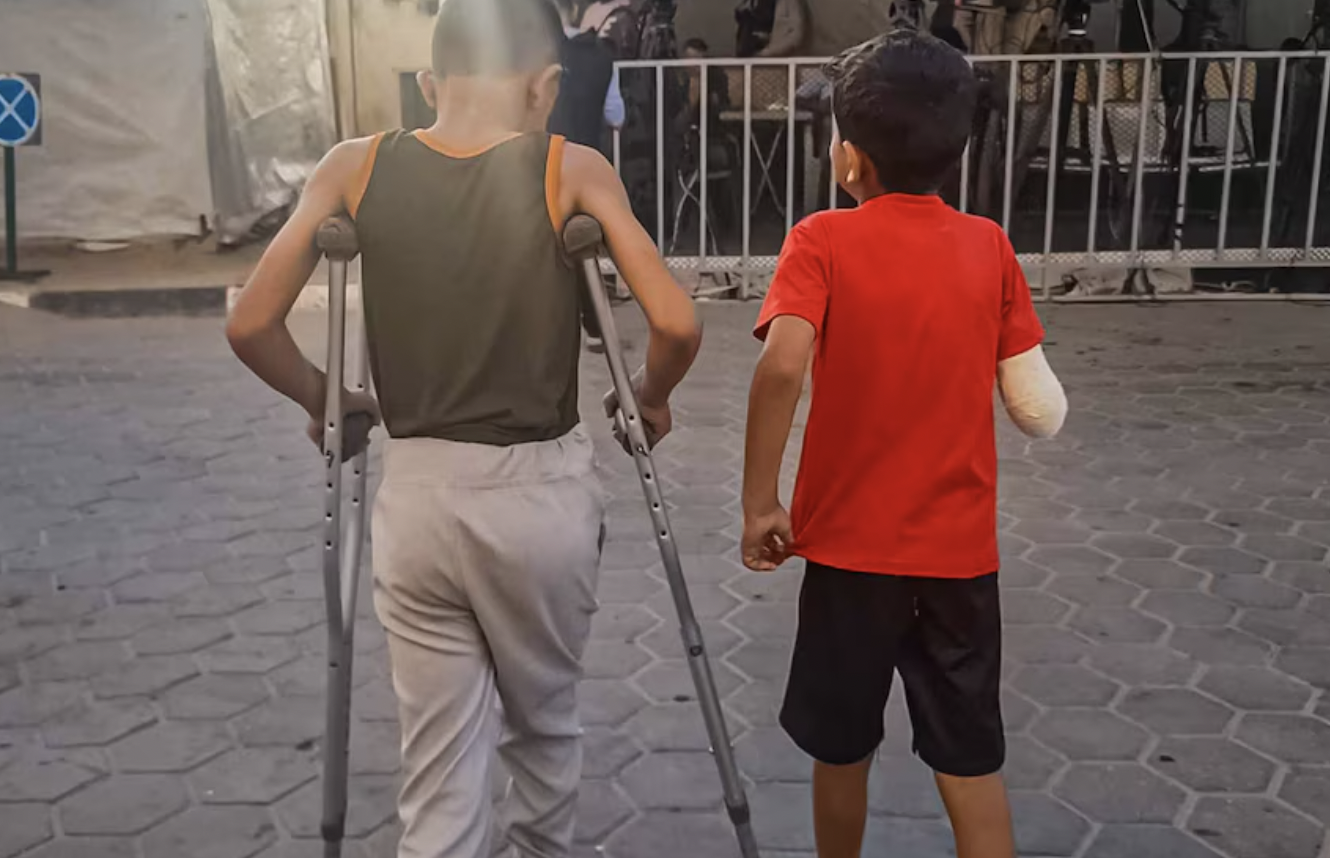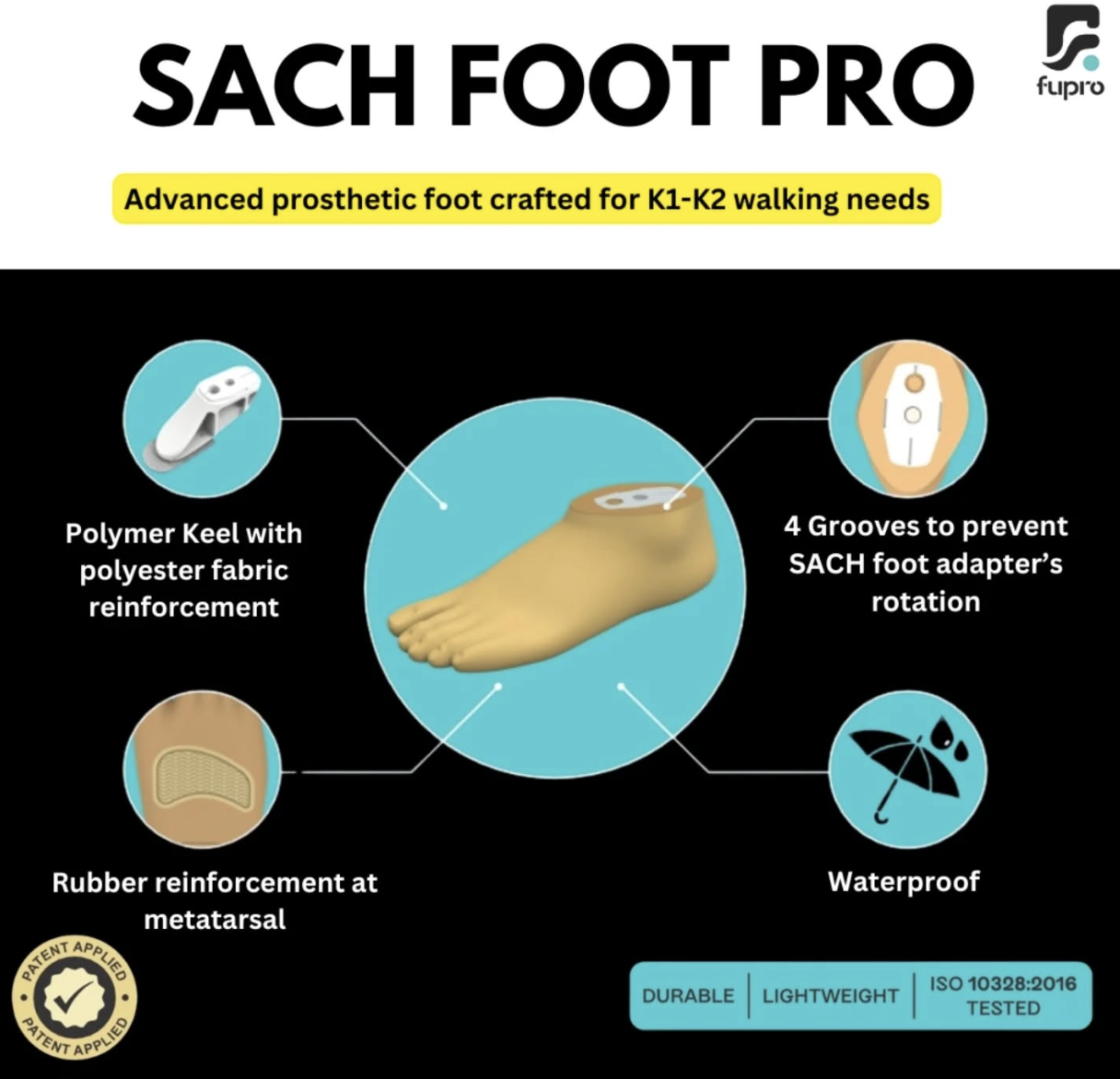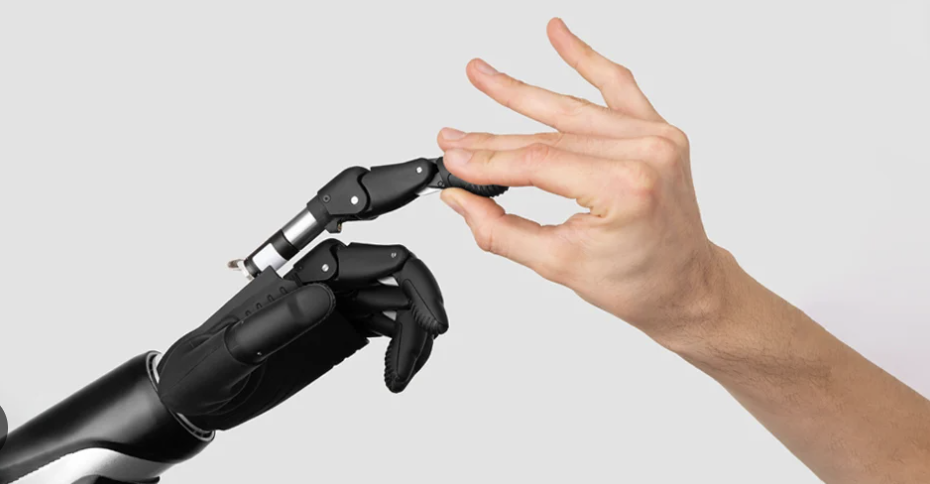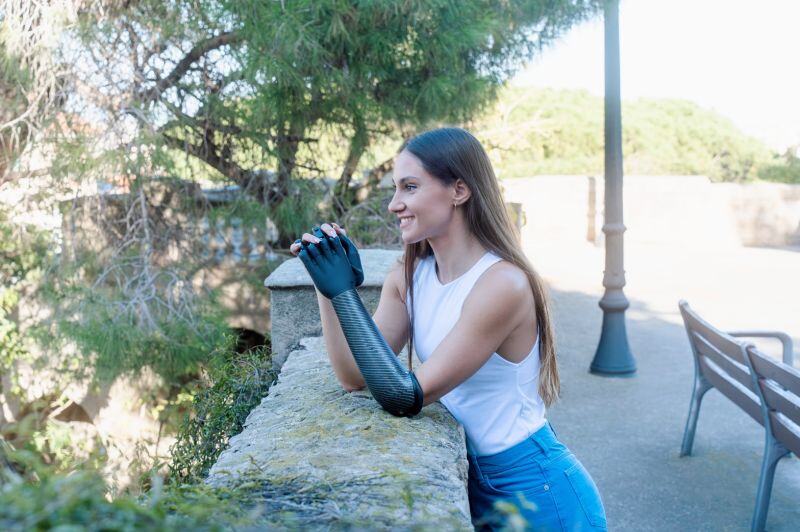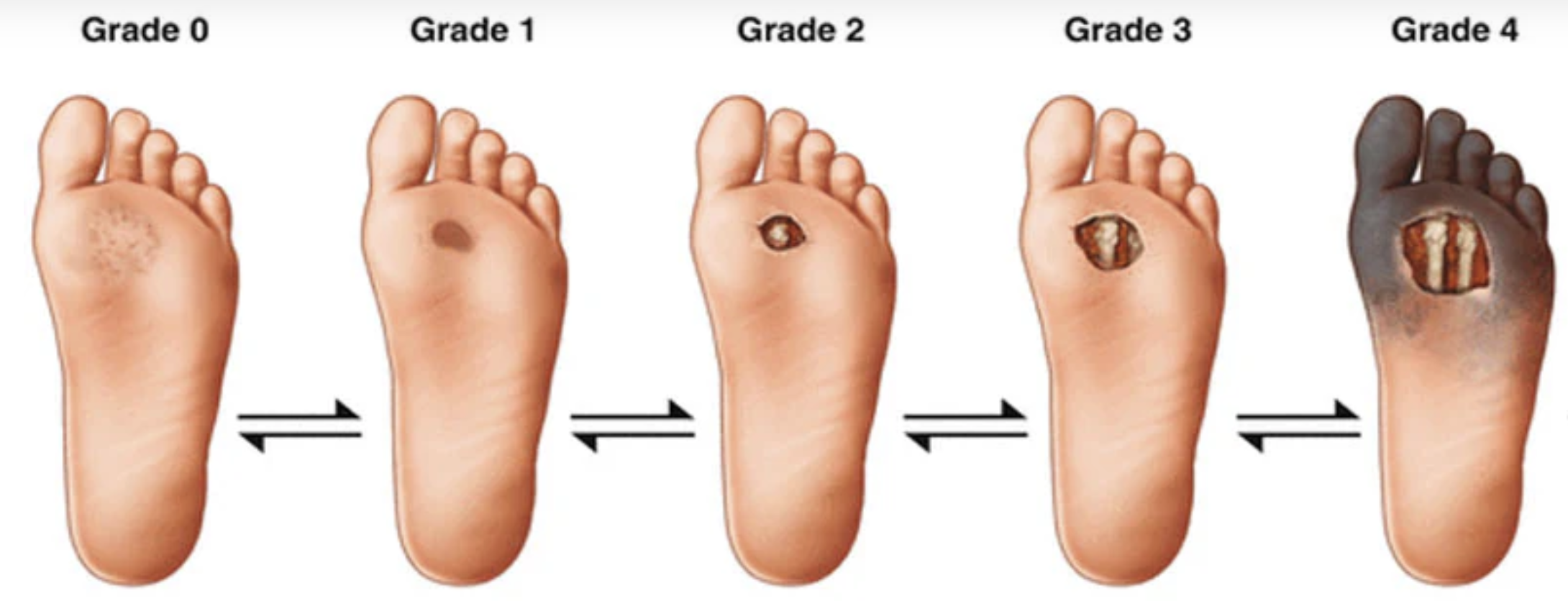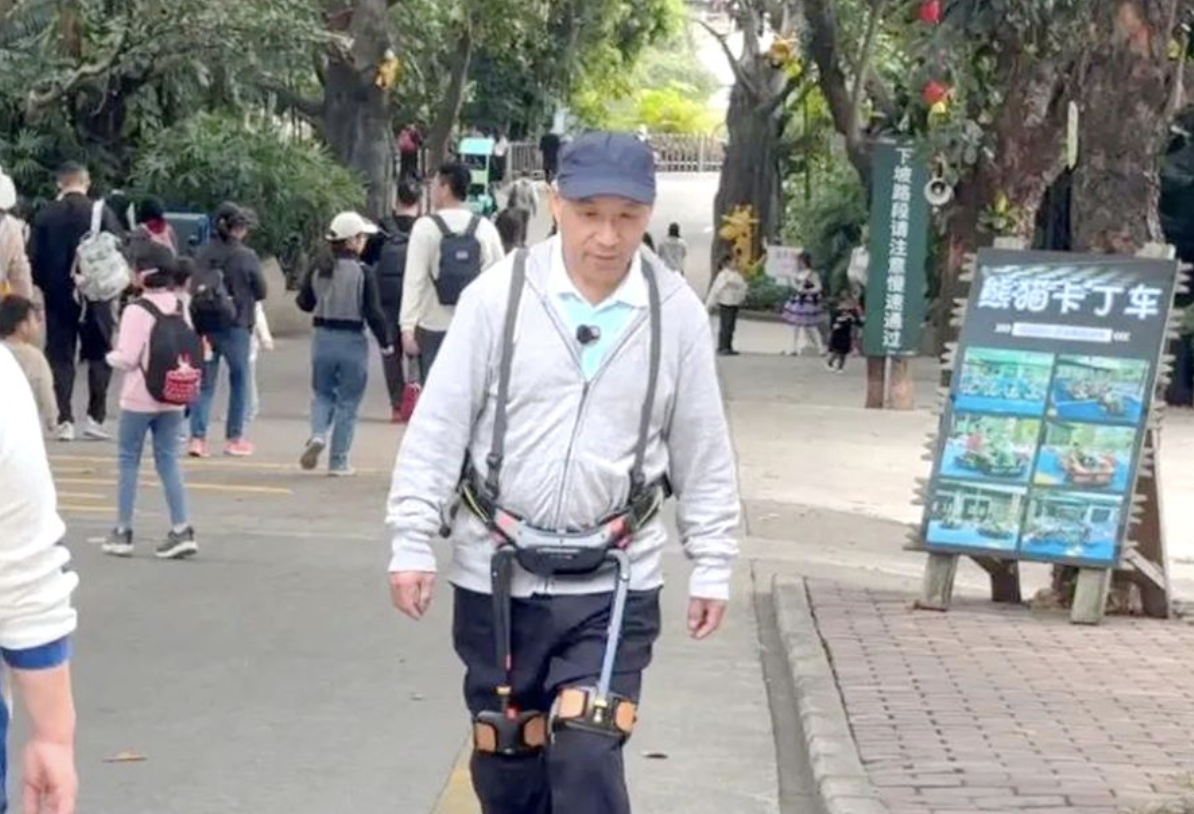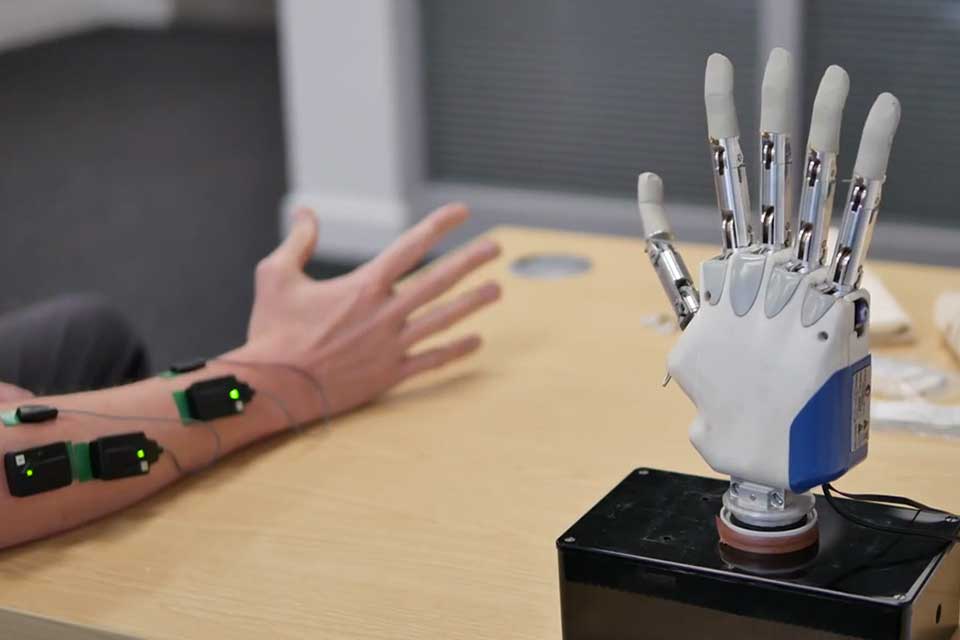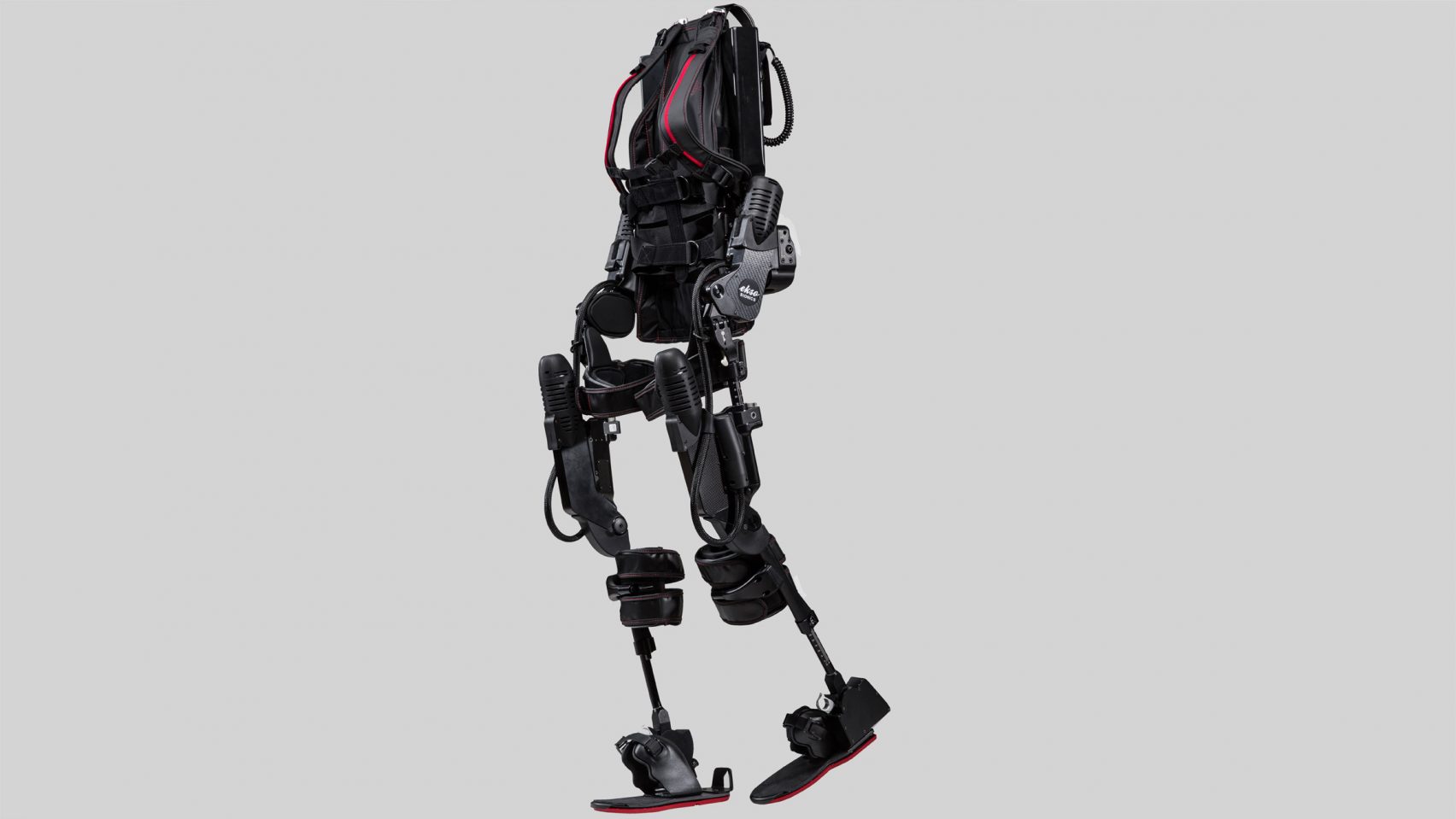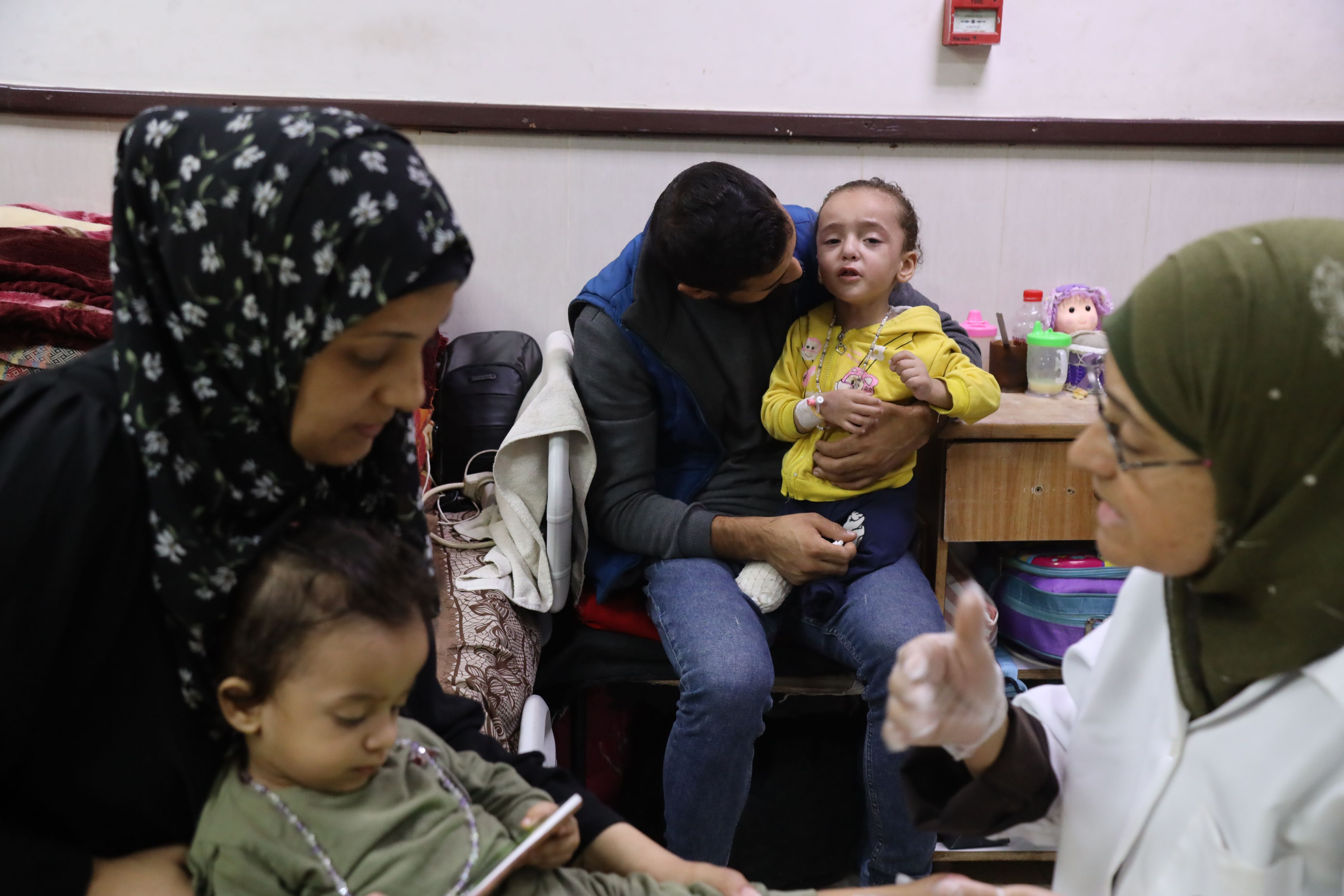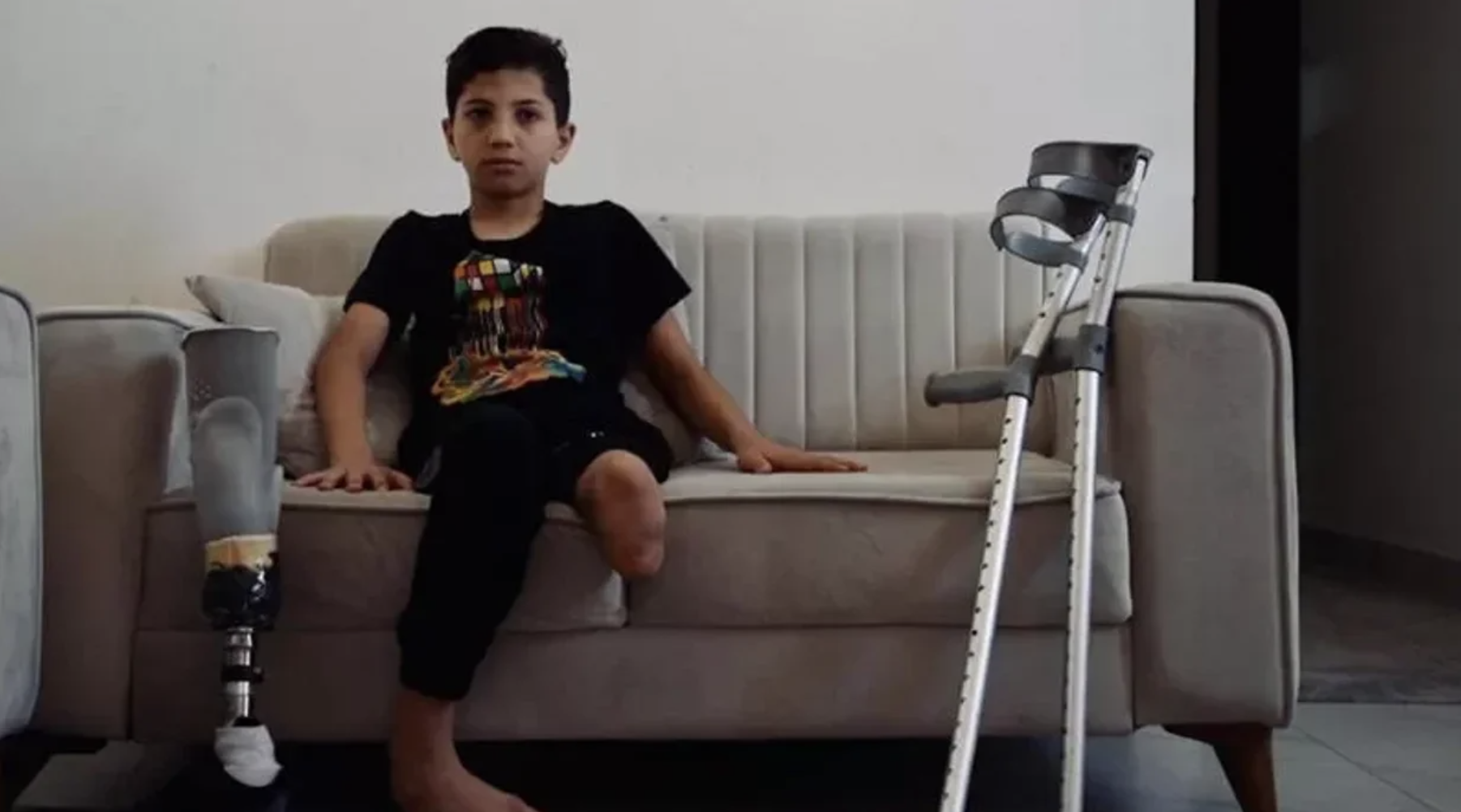There's one question Om Haitham Al-Ashqar dreads her son asking again.
"He asks me whether his arm will ever grow back. I don't know how to respond," the distraught mother says.
Her eight-year-old son Haitham and his friends were playing football in the Nuseirat refugee camp in central Gaza in late May, when the house next to them was hit by an Israeli air strike.
The building collapsed killing ten people, including at least two of Haitham's friends.
When Haitham was eventually rescued from the rubble, his right arm had been severed.
He was rushed to hospital with critical injuries.
The young boy now sits in a hospital bed nursing the freshly bandaged wound, using his other hand to push around a makeshift balloon — a blown-up surgical glove.
His mother says it's a rare moment of happiness.
"Before the war, Haitham used to laugh a lot, play a lot, and made jokes," she says.
"Now the whole family has been affected.
"After the injury my son became depressed. Not only him, but all of us.
"He was quiet before the war. Now he is violent and stubborn — he listens to no-one."
The intensity of Israel's bombing campaign inside Gaza has created a new generation of child amputees on a scale that aid and health organisations say they are struggling to comprehend.
According to the United Nations children's agency, UNICEF, more than 1,000 children had legs amputated in the first two months of the war — more than 13 children losing one, or both legs, every day.
After nine months of fighting, there are no precise figures for the number of Gazans who have lost limbs, but medical officials and aid groups expect the numbers to have soared into the thousands.
And there is no shortage of horror stories.
American paediatrician Seema Jilani spent weeks working inside Gaza's Al-Aqsa Hospital alongside Palestinian physicians and nurses in December last year.
She said she had lost count of the number of amputations that were being performed to save lives.
"At one point one of my colleagues said, 'Whose body part is this?' And they held up a lower leg with the boot still on," she said.
"So that's the level of absolute chaos and despair happening everyday — when we are asking: 'Whose body part is this?'"
Dr Jilani said when morphine began to run out, amputations sometimes had to be performed without anaesthesia.
She said there was a "never-ending nightmare" of victims that meant some of the most severely injured, including children, were often left to die.
"I recall walking into the emergency room and seeing at least six children under the age of 13 with life-threatening injuries due to bombardment," she said.
"Then I remember going into what we call the resuscitation room, where you are actively resuscitating someone from the brink of death. And four out of the five children there were under the age of 15.
"The injuries they had come in with were arms and legs completely blown off, hanging by soft tissue and skin, and with bones exposed.
"In another case, there was a 10-year-old boy lying in the emergency room, actively dying — what we call last agonal breaths — in the chaos of more and more casualties being brought in.
Even after amputations are performed, there is often little adequate pain relief during the recovery process.
That was the case for 10-year-old Sumaya Abu Ghaliba, who woke up in hospital without her arm, after nearly dying when an Israeli bomb struck her house.
In videos taken shortly after the amputation, Sumaya is lying in a hospital bed, screaming in pain and rubbing the spot where her arm used to be.
Three of her cousins were also killed in the strike.
"When I arrived at the hospital, I was in a coma, I had a lung haemorrhage," she said.
"My condition was very serious. I stayed in care for six days; I was connected to the machines to breathe oxygen.
"Even after they stopped the artificial oxygen, I found it hard to breathe."
She said she used to be a top student and had dreams of becoming an engineer.
But now she just wants to escape Gaza and is adjusting to relearning everyday tasks.
"I used to comb my hair alone, I needed no-one. I could shower and do everything, dress on my own," she said.
"I can still do things sometimes by myself, but it's a little difficult for me."
Aid organisation Save the Children says children are nearly seven times more likely to die from blast injuries than adults, because they are more vulnerable and sensitive to injuries.
"Their skulls are still not fully formed, and their undeveloped muscles offer less protection, so a blast is more likely to tear apart organs in their abdomen, even when there's no visible damage," says Save the Children's director for the occupied Palestinian territory, Jason Lee.
Sumaya Abu Ghaliba used to dream of becoming an engineer, now she just wants to escape Gaza alive. (ABC News)
She said she used to be a top student and had dreams of becoming an engineer.
But now she just wants to escape Gaza and is adjusting to relearning everyday tasks.
"I used to comb my hair alone, I needed no-one. I could shower and do everything, dress on my own," she said.
"I can still do things sometimes by myself, but it's a little difficult for me."
Aid organisation Save the Children says children are nearly seven times more likely to die from blast injuries than adults, because they are more vulnerable and sensitive to injuries.
"Their skulls are still not fully formed, and their undeveloped muscles offer less protection, so a blast is more likely to tear apart organs in their abdomen, even when there's no visible damage," says Save the Children's director for the occupied Palestinian territory, Jason Lee.
He says injured children who survive an initial blast are often at ongoing risk because there is no way to adequately care for their wounds.
"The impact of seeing children in that much pain and not having the equipment, medicines to treat them or alleviate pain is too much for even experienced professionals," he said.
"Even in a war zone, the sights and sounds of a young child mutilated by bombs cannot be reconciled let alone understood within the bounds of humanity."
Sumaya and Haitham are now both living in hospital, as they try to avoid infections and access fresh bandages.
They're both desperate to be fitted with a prosthetic arm.
But inside Gaza's crumbled health system, it's simply not available.
